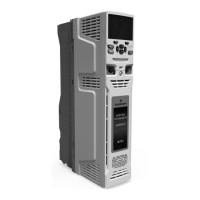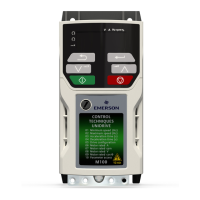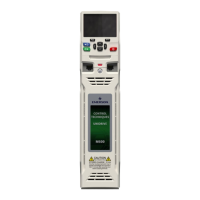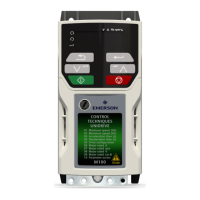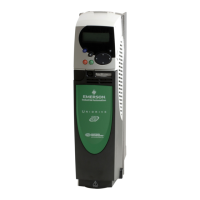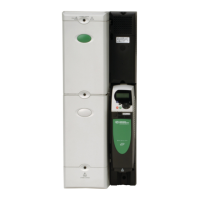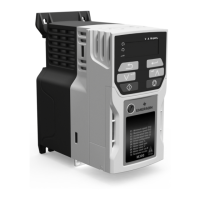144 SI-Ethernet User Guide
Issue: 1
7.5 EtherNet/IP
The Ethernet interface supports the EtherNet/IP protocol and conforms to the EtherNet/
IP adaptation of the Common Industrial Protocol (CIP) Specification. This is the same
upper-layer protocol and object model as used in DeviceNet.
The Ethernet interface module will operate as a slave device and the following
functionality is supported:
• Variable length input assembly object (instance 100) with consistency for up to
20 parameters
• Variable length output assembly object (instance 101) with consistency for up
to 20 parameters
• User selectable RPI timeout action
• Identity object (class 0x01)
• Motor data object (class 0x28)
• Control supervisor object (class 0x29)
• AC/DC Drive object (class 0x2A)
• Control Techniques objects (classes 0x64 to 0x69)
• Explicit (non-cyclic) access to parameters
7.5.1 Requested Packet Interval (RPI) timeout
This timeout is defined by the EtherNet/IP protocol and is configured in the PLC master.
If enabled, the Ethernet interface will monitor the data traffic once the cyclic data has
been established, and if data is not received within the specified time, it will perform the
requested action as defined by Pr S.20.011 RPI timeout action. This indicates that the
interface has detected that the cyclic data communication has been interrupted.
7.5.2 Read consistency
Under normal conditions, cyclic data is sampled and transmitted at the Requested
Packet Interval (RPI). However, if an option module was in the process of modifying the
mapped parameters while these parameters were being sampled, then the data
transmitted across the network may not be consistent across the entire assembly
object. If read consistency is enabled (S.20.026 Input assembly object consistency
enable) and a trigger parameter specified in Input assembly object consistency trigger
parameter (S.20.027) then data will only be sampled and transmitted when the trigger
parameter Input assembly object consistency trigger parameter (S.20.027) contains a
non-zero value. This trigger parameter will then be set to zero after the data has been
sampled.
It is therefore possible, by controlling the trigger parameters, that a user program in the
drive or option module can ensure that the values in the cyclic data parameters are not
sampled until all values are updated.
Whether consistency is enabled or not, data will always be consistent for an individual
parameter, i.e. all 4 bytes of a 32-bit value will be consistent.
The RPI timeout action will only occur on a loss of cyclic data message, i.e. after cyclic
data has been established and subsequently lost. No action will be taken if no cyclic data
has been detected.

